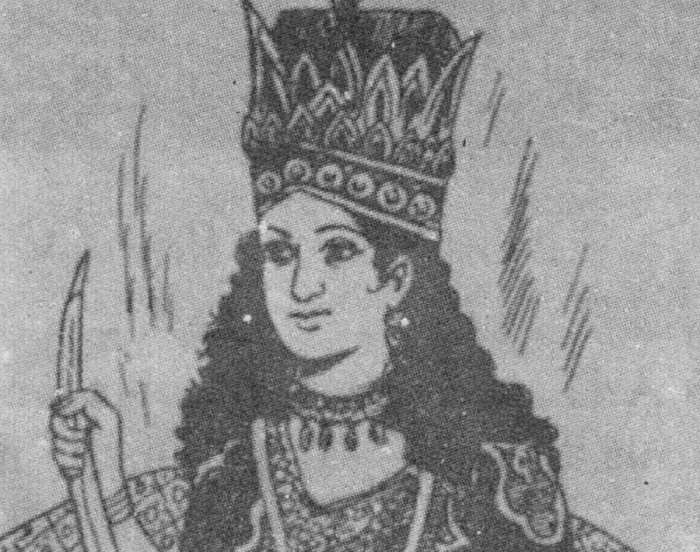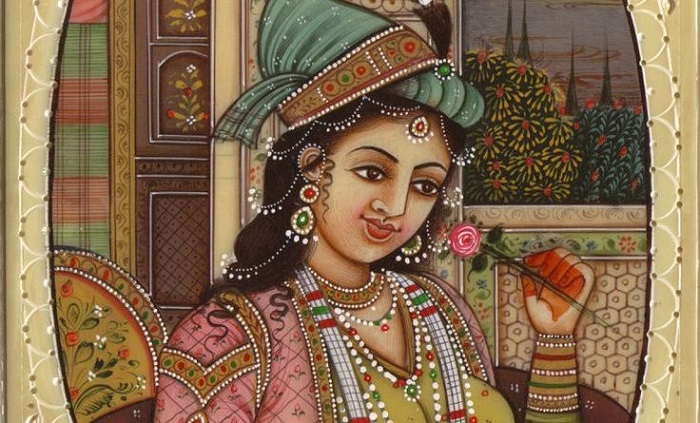Fast Facts
Date of Birth: c. 1205
Place of Birth: Budaun, Uttar Pradesh, India
Death: October 14, 1240
Place of Death: Delhi, Delhi Sultanate
Dynasty: Mamluk
Reign: November 10, 1236 to October 14, 1240
Spouse: Malik Altunia (m. 1240–1240)
Parents: Iltutmish, Qutub Begum
Razia Sultana was the fifth Mamluk Sultan and the only female ever to rule as the Sultan of Delhi. She was the daughter of the third ruler of the Delhi Sultanate, Shams-ud-din Iltutmish, and granddaughter of the first Sultan of Delhi, Qutb ud din Aibak. She received training in administration and became heir apparent of Iltutmish after her full-brother Nasiruddin Mahmud died. However, her half-brother Rukn ud din Firuz was made the Sultan following Iltutmish’s death, but he was later assassinated after being viewed as unfit to rule. This led Razia to emerge as the new ruler. She gave up purdah and proved to be an efficient ruler both in administering her government and in leading forces at war. In her almost four years of rule she established proper law and order, made governmental reforms, infrastructural improvements and encouraged trade. Her half-brother Muiz ud-Din Bahram proclaimed himself king while she was in Bathinda. She tried to regain her power with help of her husband Malik Ikhtiar-ud-din Altunia, a chief of Bathinda, but both of them were killed.

Image Credit : https://www.ozy.com/flashback/call-me-razia-sultana/3006
Childhood & Early Life
Her father Shams ud-Din Iltutmish belonged to the Ilbari tribe in the Eurasian steppes of Turkestan and was sold into slavery at an early age. He became a favourite of his master Qutb ud din Aibak, founder of the Mamluk dynasty and the first Sultan of Delhi. Aibak married his daughter Qutb Jaan to Iltutmish. The couple welcomed their daughter Raziya Begum bint. Shams-ud-Din Iltutmish (Razia) in c. 1205, in Budaun, Uttar Pradesh, India.
Razia had a full brother Nasiruddin Mahmud. Since her childhood she had the privilege to behold the power of the harem which was dominated by her mother as also that of the court where she had access as a favourite of both her father Iltutmish and maternal grandfather Aibak. Rukn ud din Firuz and Muiz ud din Bahram were her half-brothers born through former slave-girls. Aibak died in 1210 AD when Razia was five years old. He was succeeded by Aram Shah. Iltutmish was invited by a group of 40 Turkic nobles called the “Chihalgani” to take the throne of Delhi Sultanate as they were against Shah. In 1211 Shah and Iltutmish met on the plain of Bagh-i-Jud near Delhi where the former was defeated by Iltutmish who then became third ruler of Delhi Sultanate.
Razia grew up as a brave young girl who took training in military skills and professional warfare like her brothers. Iltutmish would allow his favourite child Razia to be around him while he handled affairs of the state. She also received training on how to administer an empire in absence of a male ruler like some of the princesses of those times. She thrived in impressing her father with her skills and perseverance in carrying out her tasks and duties.
Heir Apparent, Succession to the Throne
Razia’s full brother and eldest son of Iltutmish, Nasiruddin Mahmud was the heir apparent of Iltutmish and was therefore groomed to succeed his father. Nasiruddin Mahmud became the governor of Bengal and was bestowed with the title of Malik-us-Sharq (Lord of the East) by his father. However after his sudden death in 1229 CE, Iltutmish became worried of a worthy successor as he felt all his surviving sons born of his other wives were incapable to rule.
Razia demonstrated her capability by acting as an able regent with the support of a loyal minister of Iltutmish while the latter left Delhi in 1230 to invade Gwalior. After a one-year siege Iltutmish captured Gwalior and returned to Delhi in 1231 and was impressed to see his daughter’s performance. He nominated Razia as his heir apparent while in death bed in 1236 and with this he made history by becoming the first ever Sultan to break all norms and designate a woman as successor. However the nobles of the court were not happy to have a woman as ruler and thus did not support Razia. Upon her father’s death on April 30, 1236, her half-brother Rukn ud din Firuz was made the fourth sultan of the Mamluk Sultanate.
The newly crowned Rukn ud din Firuz was a self-endowed person and indulged himself in personal pleasures including resolving in music, and debauchery which caused much indignation among the people of the kingdom. His mother Shah Turkaan took advantage of his casual attitude as a king and grasped all powers in her hand and started running the government. Shah Turkaan proved to be a despotic ruler who directed execution of several people of the kingdom. Eventually Rukn ud din Firuz was considered an unfit ruler and on November 9, 1236, he and his mother were murdered. The nobility then reluctantly agreed the ascension of Razia to the throne as the fifth sultan of the Mamluk Sultanate. This made her the first and only female ruler of the Delhi Sultanate. Her coronation ceremony was held on November 10, 1236 and she started reigning with the Regnal name of Jalâlat-ud-Dîn Raziyâ.

Image Credit : https://www.thefamouspeople.com/profiles/razia-sultana-6757.php
Reign
Razia proved her efficiency as a ruler. She gave up purdah as also the women attire for Muslims and wore attire that was similar to the ones worn by rulers before her. The conservative Muslims were however shocked and did not like her move of breaking the custom by giving up the veil and displaying her face in public. She ran her government adroitly and confidently and at the same time demonstrated her warrior skills by riding an elephant and leading her forces from the front in the battles as the chief of her army. She captured new territories thus fostering her kingdom.
During her reign, Razia made significant reforms in government thus displaying her skills as a competent administrator. She established proper law and order in her empire and made attempts in bettering the infrastructure of the country by digging wells, building roads and encouraging trade. A secular ruler, Razia made efforts in safeguarding and conserving the inherent culture of the Hindu subjects in her reign. She attempted to do away with the tax imposed on non-Muslims, but was opposed by the nobility. She set up schools, centers for research and academies apart from public libraries that had the Quran and the traditions of the Prophet as well as works of ancient philosophers. Schools and colleges also imparted lessons from Hindu works in literature, astronomy, philosophy and science. She was also a patron of art and culture and supported musicians, poets and painters. She ordered coins that would be minted with her name engraved.
Personal Life, Decline of Power, Death & Legacy
Malik Ikhtiar-ud-din Altunia was a childhood friend of Razia. According to many the two were childhood sweethearts who were very much in love with each other. Despite all adversities Altunia struck by her through thick and thin during her reign which also included aiding her in the downfall of Rukn ud din Firuz’s rule. His services were acknowledged by Razia who inducted him as governor of Bathinda. Some historians even suggest that it was the constant support of Altunia that led Razia to rule the Sultanate successfully. Such suggestions make sense to some extent as the Turkish nobles began a conspiracy against Razia only after Altunia left for Bhatinda. The downfall of Razia’s reign began when the Turkish nobles, who were resentful of the rule by a female monarch, deliberately spread rumour linking Razia with an African Siddi slave-turned-nobleman Jamal-ud-Din Yaqut who gradually became her close confidante. Such rumours made Altunia jealous who then led a rebellion against Razia, however only to get her back. What followed was a battle between Razia and Altunia that resulted in death of Yaqut and capture of Razia by Altunia. With time the lovers cleared their misunderstandings and got married.

Image Credit : https://www.jagranjunction.com/infotainment/the-unique-love-story-of-delhi-woman-emperor/
In the meantime while Razia was in Bathinda, her half-brother, Muiz ud din Bahram declared himself sultan of the Mamluk Dynasty with backing from forty chiefs. Razia in an attempt to regain her throne assembled forces and marched towards Delhi along with Altunia. They were however defeated by Bahram on the 24th of Rabi’ al-awwal 638 A.H. (October 1240). The next day the couple fled from Delhi and reached Kaithal, but were deserted by their remaining forces. On the 25th of Rabi’ al-awwal 638 A.H. the couple were killed.
There is a dispute regarding the actual site of her grave. While many say that she was buried in a courtyard in Bulbul-i-Khan near Turkmen Gate, Delhi, some say the site is in Kaithal where the Viceroy of India Lord Linlithgow came to visit her tomb in 1938. There are others who claim the site to be in Tonk, Rajasthan.
A biopic was made on her titled ‘Razia Sultan’ that released on September 16, 1983 and had Indian actress Hema Malini in the titular role. A historical drama television series on her life titled ‘Razia Sultan’ with actress Pankhuri Awasthy playing the main role started broadcasting in ‘& TV’ from March 6, 2015.


